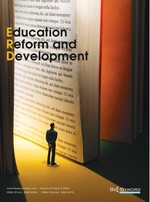Abstract
With the declining birth rate and the exacerbation of aging in China, the construction of preschool education teacher programs faces unprecedented challenges. To address these challenges, it is imperative to draw insights from the successful experiences and lessons of Japan and South Korea. Both countries have adopted different strategies in response to their population crises, particularly in the realm of preschool education teacher development. By conducting a comparative analysis of these strategies, the commonalities and differences can be identified. An urgent task is to improve the provision of nursery services for children under three years old, enhance incentives for childbirth, and establish an early warning mechanism for population trends to optimize the allocation of educational resources. Additionally, efforts should focus on enhancing the quality of teachers and expanding employment opportunities to mitigate the impact of the population crisis on the high-quality and balanced development of preschool education teachers.
References
The Korean Ministry of Education, 2023, Population Trends in May 2023. Viewed August 15, 2023. https://kostat.go.kr/board.es?mid=a10301020300&bid=204&act=view&list_no=426415
The Korean Ministry of Education, 2014, The Early Childhood Education Act (Revised Version), 2014. Viewed August 20, 2023. https://www.kedi.re.kr/khome/main/research/selectEdurawForm.do?article_sq_no=26896&board_sq_no=21¤tPage=1&selectTp=0
The Korean Ministry of Education, 2023, The Basic Plan for the Development of Early Childhood Education (2018–2022). Viewed August 15, 2023. https://www.moe.go.kr/boardCnts/viewRenew.do?boardID=312&boardSeq=74965&lev=0&searchType=null&statusYN=C&page=4&s=moe&m=0301&opType=N
The Comparative Education Research Center, Institute of Educational Sciences, 1989, World Research on Early Childhood Education. Guizhou People’s Publishing House, Guiyang, 86.
Yang H, Zhou C, 2005, History of Foreign Early Childhood Education. Guangxi Education Press, Nanning, 560–561.
The Japanese Educational News Network, 2023, Japan Passes ‘Future Child Strategy Draft’ to Address Declining Birth Rate. Viewed August 24, 2023. https://www.kyobun.co.jp/news/20230601_05/
The Department of Development Planning, Ministry of Education, 2023, The Basic Situation of National Educational Development in 2022. Viewed August 20, 2023. http://www.moe.gov.cn/fbh/live/2023/55167/sfcl/202303/t20230323_1052203.html
The Korean Ministry of Education, 2023, The Third Basic Plan for the Development of Early Childhood Education (2023–2027). Viewed August 21, 2023. https://www.moe.go.kr/boardCnts/viewRenew.do?boardID=312&boardSeq=94625&lev=0&searchType=null&statusYN=W&page=1&s=moe&m=0301&opType=N
China News Service, 2022, South Korea Sees Sharp Decline in Student Numbers in Next Decade; Government Plans to Cut Number of Public School Teachers Next Year. Viewed August 21, 2023. https://www.chinanews.com.cn/gj/2022/09-21/9857092.shtml
